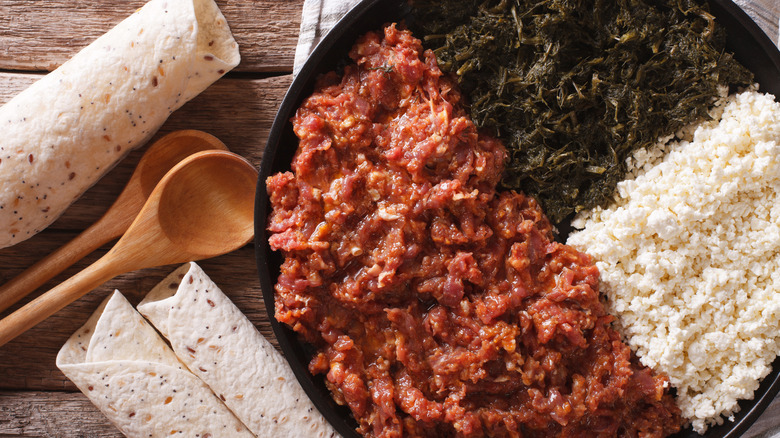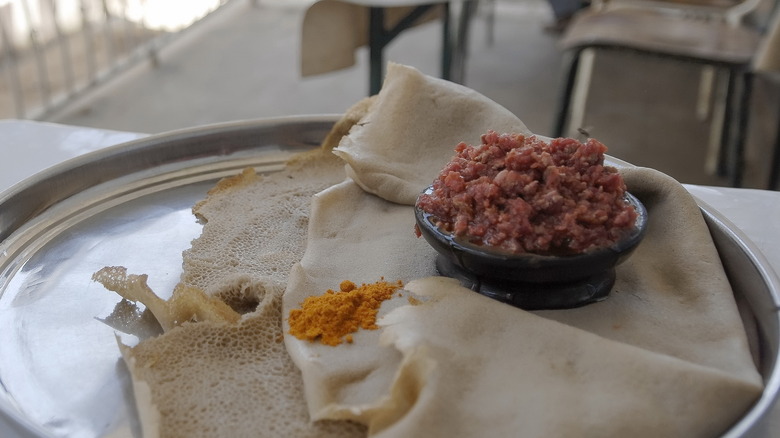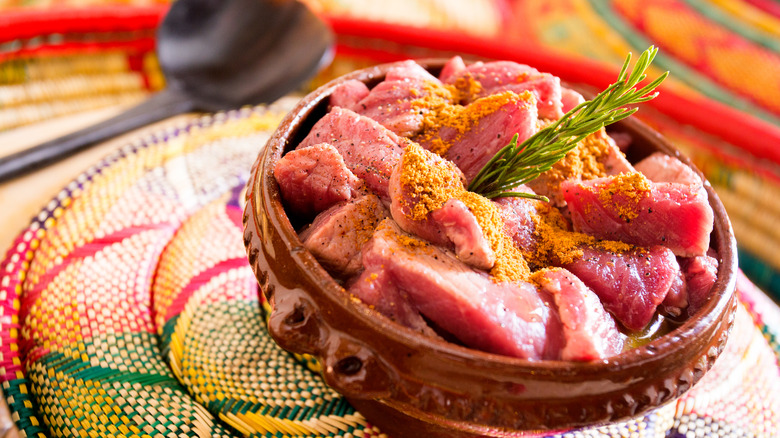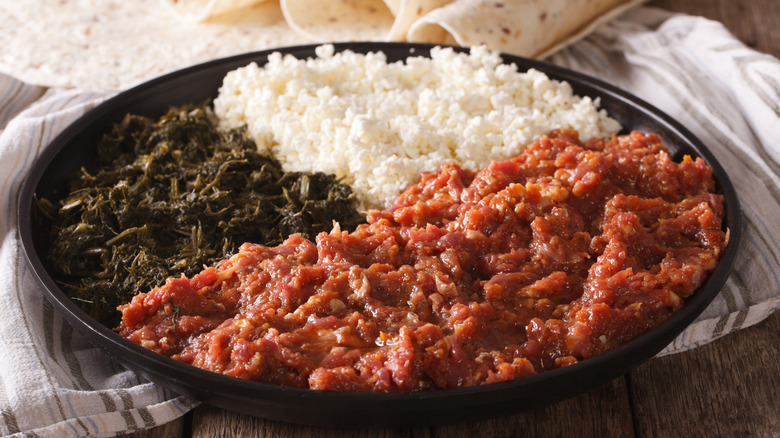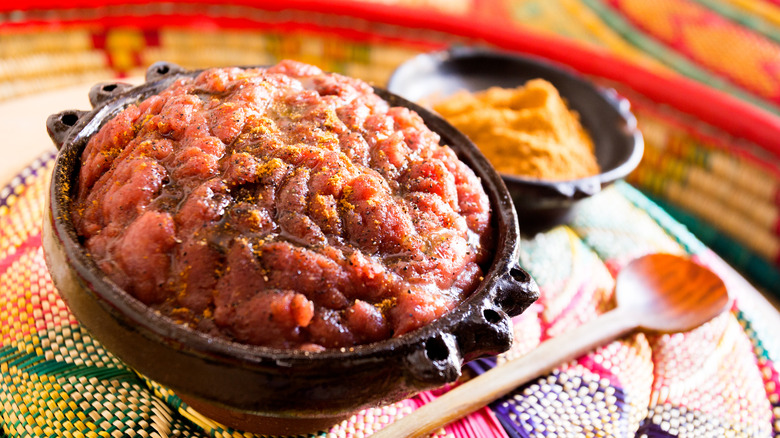Flavorful Clarified Butter Is The Key That Makes Ethiopian Kitfo Unique
Tired of a medium-rare steak? There are many different ways to enjoy beef with more than a touch of red. From steak tartare and carpaccio to Thai Koi Soi, there is a multitude of raw beef preparations around the globe. Few stand out quite like kitfo — a tender, raw ground meat dish popular in Ethiopia and now becoming a hit stateside, too.
The food is concocted with high-quality beef, aromatic spices, and, most importantly, infused with a delectable clarified butter. The result not only melts in your mouth but releases a bouquet of floral spice in the process. And if you're uncertain about diving into it completely raw, ask for it lebleb, which means cooked to a medium rare. The dish is a showcase of Ethiopian food's irresistible palate, especially when paired with spongey injera, a side of fresh cheese, and collard greens.
History of kitfo
Kitfo originates from the Gurage region of Ethiopia, home to the Gurage people. As with most of Ethiopia, they are Orthodox Christians and have strict dietary restrictions during Lent. Some suggest the dish emerged from such culinary boundaries as a method of eating meat once fasting is over. Additionally, it's especially popular during the end of the fasting season, often enjoyed on Orthodox Easter Sunday.
A common legend cites the dish came around when the Gurage people were under invasion by Muslim warriors. Not wanting to disclose the location of their camp due to cooking fires, the Gurage invented a way of eating meat raw. Additionally, eating kitfo was said to bolster a sense of masculinity for the warriors. However, the exact origins of kitfo are unknown. It was first noted in print in 1868 by traveler James Barker, but it's clear the food has been popular for centuries.
How kitfo is made
Kitfo reaches for a lean cut of high-quality beef like top round, sirloin, or ribeye. It's important that the meat is sourced in whole chunks since kitfo must be sliced right before serving. Traditionally, the butchering is done with a long, curved knife called a lekema. Any tendon and fats are removed first, and then the beef is chopped into a fine texture that melts in the mouth.
Next comes the essential component that really makes kitfo shine — niter kibbeh. A popular component in Ethiopian cooking, this clarified butter incorporates spices like black cardamom, ginger, garlic, caraway, turmeric, and a bright, oregano-like herb called koseret. Some producers infuse the butter once, while others do it two times; it depends on the recipe. The warm butter is then mixed into the beef by hand, along with a spice blend called mitmita. This addition infuses the dish with heat from dried chilies, along with floral spices like cardamom, cloves, and cumin.
After such a combination, the dish is ready to serve. However, some slightly cook the meat to varying degrees. Lebleb is the equivalent of medium rare, while fully cooked kitfo is called yebesele.
How kitfo is served
Like many Ethiopian dishes, kitfo is served with injera — a sour flatbread that's used as a vessel to eat food. Additionally, it comes with a side of collard greens called gomen, which are also cooked with clarified butter and spices. A serving of cheese called ayib, a freshly-made milk product resembling cottage cheese, adds a dash of acidity. This, along with a sprinkle of mitmita, the spice used to season the kitfo, rounds out the presentation. In Gurage, the dish is accompanied by qocho bread instead of injera. Qocho is made with the bark of enset, a plant common only in Eastern Africa, and finding this accompaniment is rare outside of Ethiopia.
In addition to being eaten at home, kitfo is served in many Ethiopian restaurants, including tej bets, which are businesses that serve honey wine. Often a convivial affair, eating kitfo is interlinked with Lent. This dish is enjoyed at the end of the fasting season, as well as on other holidays, celebrations, and important dates. Kitfo may be a part of a larger spread of dishes, all colorfully arranged on top of a large injera.
Where to find kitfo
For some, it may feel intimidating to source the high-quality beef necessary for kitfo, so head to an Ethiopian restaurant to enjoy the dish. Proprietors source the necessary cuts as well as trace ideal cow origins, and the dish tastes better when the beef is grass-fed. Many Ethiopian restaurants in the U.S. serve the kitfo, especially in large Ethiopian hubs like Washington D.C. and Los Angeles.
Of course, there's no better place to try kitfo than in Ethiopia, where the dish is now popular throughout the country. In Addis Ababa, venerable restaurants opened for decades serve acclaimed versions of the dish. While it likely won't be exact replica, cooks should also try their hand at making kitfo at home. With a connection to a good butcher and the patience of crafting niter kibbeh, a delicious homespun version can emerge.
